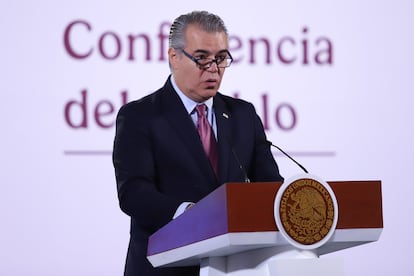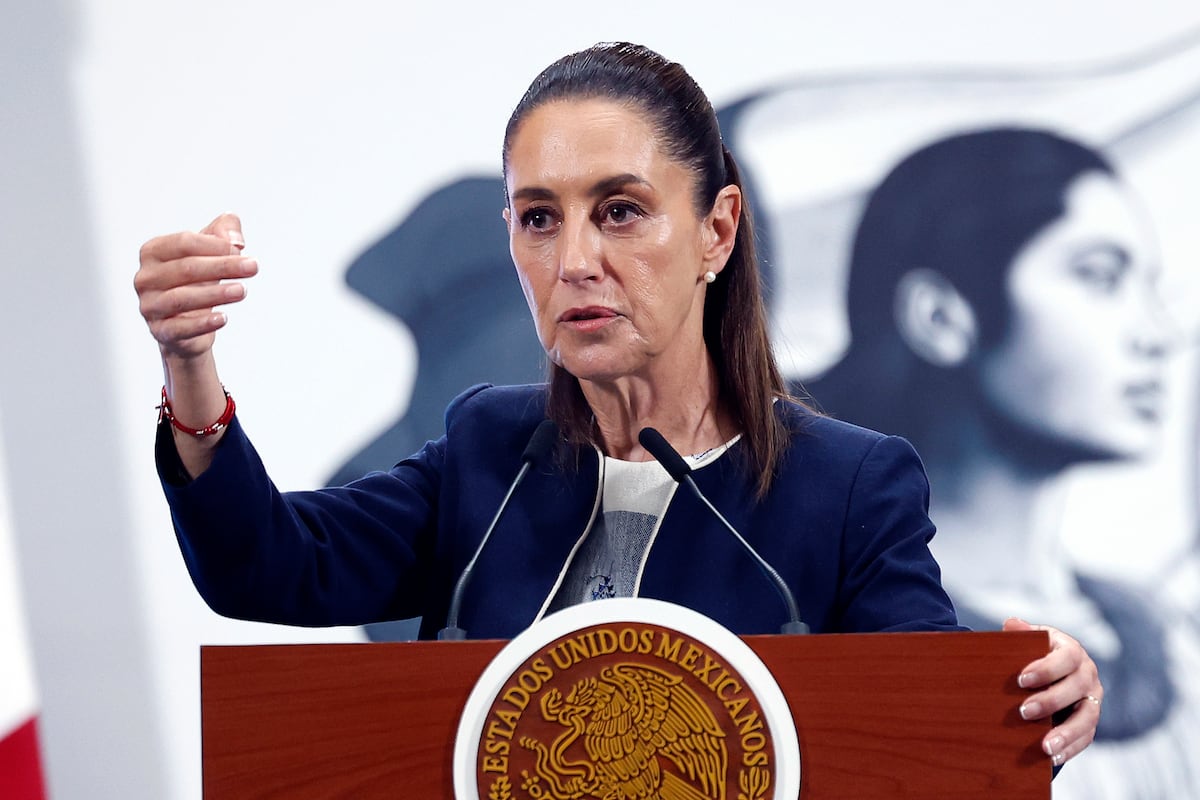Plan Mexico — Mexican President Claudia Sheinbaum’s six-year roadmap to attract investment and bolster economic growth — is beginning to take shape amid a landscape full of uncertainties. The latest threat from former U.S. President Donald Trump to raise tariffs on Mexican exports to 30% starting August 1 once again puts pressure on Mexico.
Behind closed doors, Sheinbaum is moving quickly to implement the strategy, holding meetings with business leaders, launching incentives for farmers, ranchers, and investors, and offering financing support. Still, the outlook is challenging due to the country’s economic slowdown, persistent inflation, and more than three months of sluggish job creation.
Sheinbaum introduced Plan Mexico earlier this year as her administration’s main strategy for countering Trump’s protectionist agenda. The government’s goal has been clear from the start: to ramp up domestic production, reduce reliance on Asian imports, and promote greater industrial integration in North America under the USMCA trade agreement. The launch came with ambitious targets — $277 billion in investment and the creation of over 1.5 million jobs annually. But progress has been slowed by tariff threats from Washington, a cutback in federal investment, and Mexico’s internal economic deceleration.
Despite these issues, Plan Mexico remains the cornerstone of Sheinbaum’s economic agenda. This week, the president met for two hours at the National Palace with top business leaders to fine-tune the strategy. After the meeting, Francisco Cervantes, president of the Business Coordinating Council (CCE), said they reviewed the most viable infrastructure projects ready to move forward. Attendees included billionaire Carlos Slim and executives from major firms like Vitro, Alfa, and Sigma.
 Francisco Cervantes, president of the CCE.Daniel Augusto (Cuartoscuro)
Francisco Cervantes, president of the CCE.Daniel Augusto (Cuartoscuro)
In the same vein, earlier this month, Nacional Financiera issued over 10 billion pesos ($570 million) in debt securities to finance projects under Plan Mexico. This multi-billion-peso issuance has been accompanied by a series of incentives to launch the so-called Polos del Bienestar (Wellbeing Hubs), as well as weekly investment announcements by companies operating in the country as part of the strategy. The most recent was Bimbo’s $2 billion investment plan for the next three years. Prior to that, other companies such as Walmart and Mercado Libre also announced their investment plans during the Sheinbaum administration.
Rodrigo Aliphat, an industrial policy expert at CIDE, explains that Plan Mexico was originally conceived as a commercial alliance with the United States, centered on nearshoring and taking advantage of the relocation of companies — an outlook that has shifted in recent months due to mounting tariff threats.
For the specialist, the key for Mexico, in light of a highly volatile U.S. market, lies in strengthening its domestic market. “We must develop national companies that focus on the internal market and the Mexican economy. Exporting to other countries is fine, but it’s only a stopgap that won’t be enough and will lead us to the same paradox we are in right now with the United States: depending on another economy to maintain economic growth,” he says.
At this stage, according to the CIDE researcher, rather than a complete strategy shift, what’s needed is an adjustment to the plan that maintains its focus on domestic content, manufacturing job creation, and investments in high-growth-potential industries. “The most important issue is the financing of public investment and how President Claudia Sheinbaum’s administration will finance productive projects and support domestic producers,” he says.
An industrial sector businessman, speaking on condition of anonymity, adds that alongside external uncertainty due to U.S. tariffs, Plan Mexico also faces budgetary constraints due to the drop in federal spending. From a planning perspective, the issue isn’t that the assessment is wrong — it’s that there aren’t enough results and the plan hasn’t fully materialized due to the constraints posed by U.S. policy.
On paper, Sheinbaum’s six-year strategy aims for 50% of national supply and consumption to be produced in Mexico. It also seeks to increase domestic content in industries such as automotive, aerospace, electronics, semiconductors, pharmaceuticals, and chemicals by 15% by 2030. Just a few months into its implementation, Mexican business leaders and government officials are now reassessing the initiative to ensure that its promises are finally translated into real-world outcomes.
Sign up for our weekly newsletter to get more English-language news coverage from EL PAÍS USA Edition
